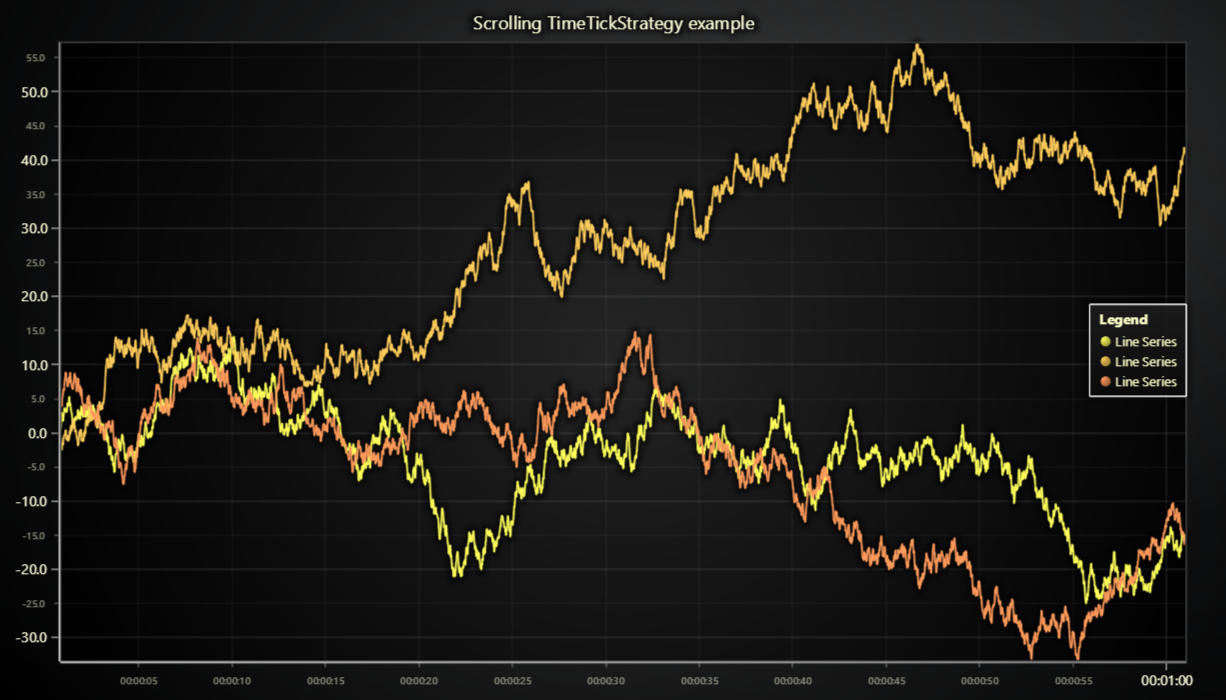This demo application belongs to the set of examples for LightningChart JS, data visualization library for JavaScript.
LightningChart JS is entirely GPU accelerated and performance optimized charting library for presenting massive amounts of data. It offers an easy way of creating sophisticated and interactive charts and adding them to your website or web application.
The demo can be used as an example or a seed project. Local execution requires the following steps:
-
Make sure that relevant version of Node.js is installed
-
Open the project folder in a terminal:
npm install # fetches dependencies npm start # builds an application and starts the development server -
The application is available at http://localhost:8080 in your browser, webpack-dev-server provides hot reload functionality.
Example that showcases the TimeTickStrategy feature with real-time data.
TimeTickStrategy is one of the available options for automatic axis tick placement and formatting. It is designed for depicting milliseconds timestamp data with extremely high resolution and flexibility.
The effective range of TimeTickStrategy starts from maximum of 100 hours all the way down to individual milliseconds level.
For this entire range, the tick labels are formatted dynamically showing the currently relevant precision with all the required accuracy.
TimeTickStrategy is a very powerful feature for real-time data monitoring applications, since its effective range perfectly covers minute, hour and even day intervals - not to mention that you can zoom in so deep that you can even see differences between individual microseconds.
Since TimeTickStrategy interprets axis coordinates as "milliseconds after 0", it doesn't make much sense to supply data directly as UNIX timestamps - instead, most applications would choose some "time origin" and subtract it from the UNIX timestamp. This means that the data will be displayed as "difference from time origin".
In this example, timeOrigin is set to Date.now() at the start, and data point X values are calculated live as x: Date.now() - timeOrigin.
The effective Axis range; TimeTickStrategy is used for depicting high-resolution data within some days max., while DateTimeStrategy is used for depicting lower resolution data over the span of long times, like some months or even tens of years.
- LightningChart
- Automatic axis scrolling options
- Automatic tick placement options
- Color factory RGBA
- Solid fill style
- Chart XY
- Axis XY
- Line Series XY
- Legend Box
If you notice an error in the example code, please open an issue on GitHub repository of the entire example.
Official API documentation can be found on LightningChart website.
If the docs and other materials do not solve your problem as well as implementation help is needed, ask on StackOverflow (tagged lightningchart).
If you think you found a bug in the LightningChart JavaScript library, please contact sales@lightningchart.com.
Direct developer email support can be purchased through a Support Plan or by contacting sales@lightningchart.com.
© LightningChart Ltd 2009-2022. All rights reserved.
